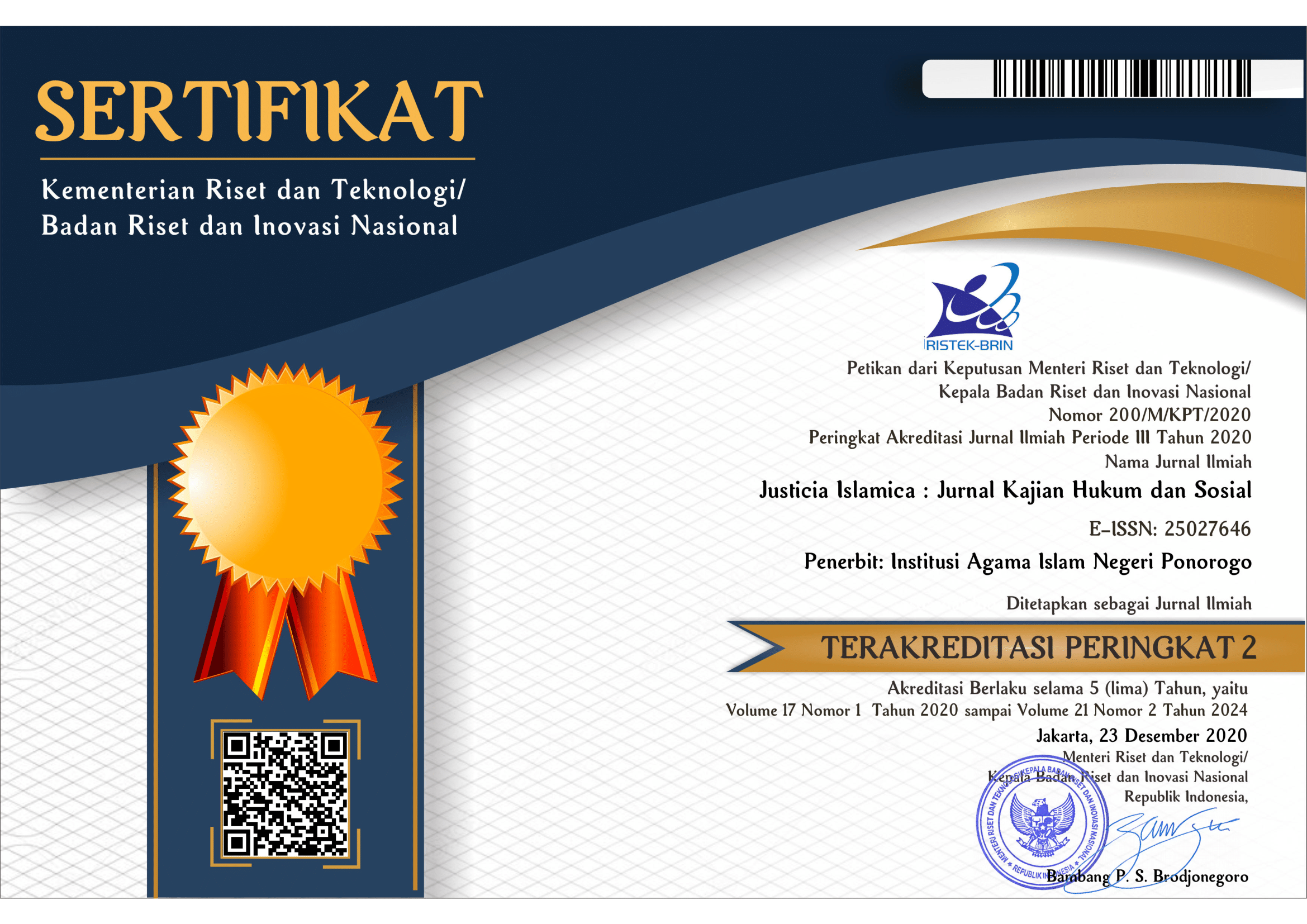Fikih Mayoritas versus Fikih Minoritas
Melacak Akar Konflik Sosial atas Nama Syari’at
DOI:
https://doi.org/10.21154/justicia.v9i2.348Keywords:
fikihAbstract
The basic character of fiqh is essentially relative, flexible and elastic. This character is visible when fiqh must adapt to social and cultural conditions of geographic areas that far from the birthplace of Islam. However, the basic character of fiqh is denied by some Muslim groups. They want to uniform fiqh according to their their interpretation that are considered more authentic and closer to the middle east fiqh format, centers the birth of Islam. The implication then is the "truth claims" which result in social conflicts in the name of religion. This paper is going to explore the argument how fiqh should be developed in accordance with Muslim plurality. This writing is framed in the context of dialog between the fiqh of majority and minority. The two of fiqh format often conflict and result social disharmony.
Downloads
Published
Issue
Section
License
Copyright (c) 2016 Justicia Islamica

This work is licensed under a Creative Commons Attribution-ShareAlike 4.0 International License.
Requirements to be met by the author as follows:
- Author storing copyright and grant the journal right of first publication manuscripts simultaneously with licensed under the CC BY-SA allows others to share the work with a statement of the work's authorship and initial publication in this journal.
Authors can enter into the preparation of additional contractual separately for the non-exclusive distribution of a decadent version of the journal issue (e.g., post it to an institutional repository or publish it in a book), with the recognition of initial publication in this journal.
Authors are allowed and encouraged to post their work online (e.g., in institutional repositories or on their website) before and during the submission process because it can lead to productive exchanges and citations earlier and more severe than published works. (see The Effect of Open Access).
This work is licensed under CC BY-SA.


















